Visiting gardens is one the joys of my life. For the last four years, I’ve been hosting small group tours to gardens in Britain and Italy, working alongside an outstanding professional travel agent based in Vancouver. Julia Guest at Travel Concepts does the detailed planning that is essential to ensure a good garden tour. Without her work, the tours couldn’t happen. Without the cooperation of individual garden owners, the tours wouldn’t be as inspirational. And without the companionship of the men and women who have been part of the tours, they wouldn’t be nearly as enriching or as much fun!
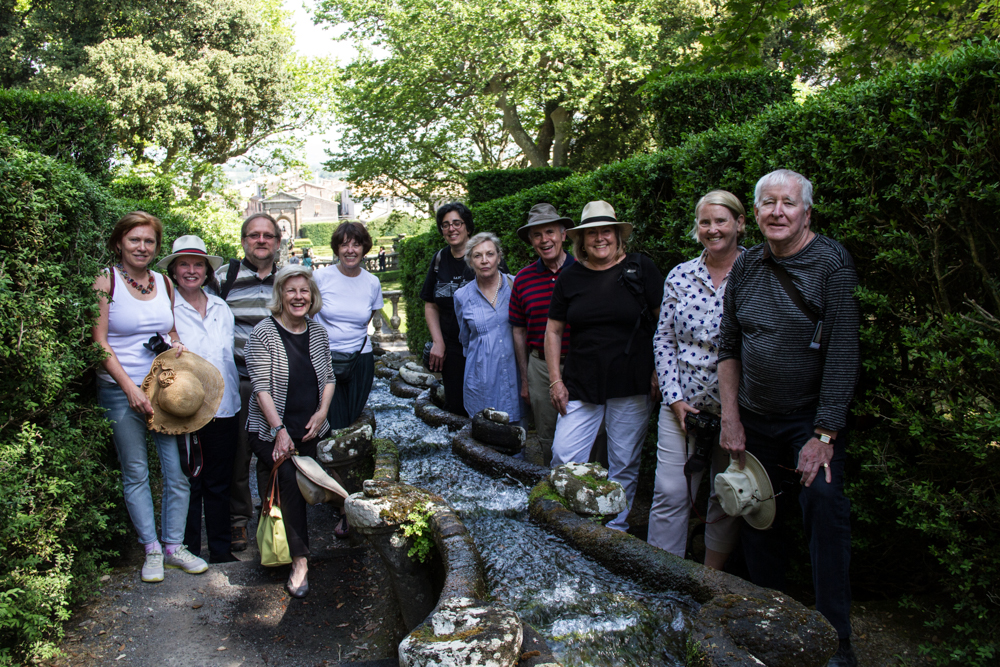
Group photos are few and far between on our tours but I did manage to lasso this group for a photo at Villa Lante, near Rome.
When you visit a public garden, you often see rules listed on a board near the entry. Don’t walk on the grass, don’t litter, stay on the paths. But apart from common sense and courtesy, what are the do’s and don’ts when you visit someone’s private garden?
In some, the do’s and don’ts are very clear. One garden we’ll be visiting in May, for example, forbids photography and requires that the names of every member of the group be supplied in advance.
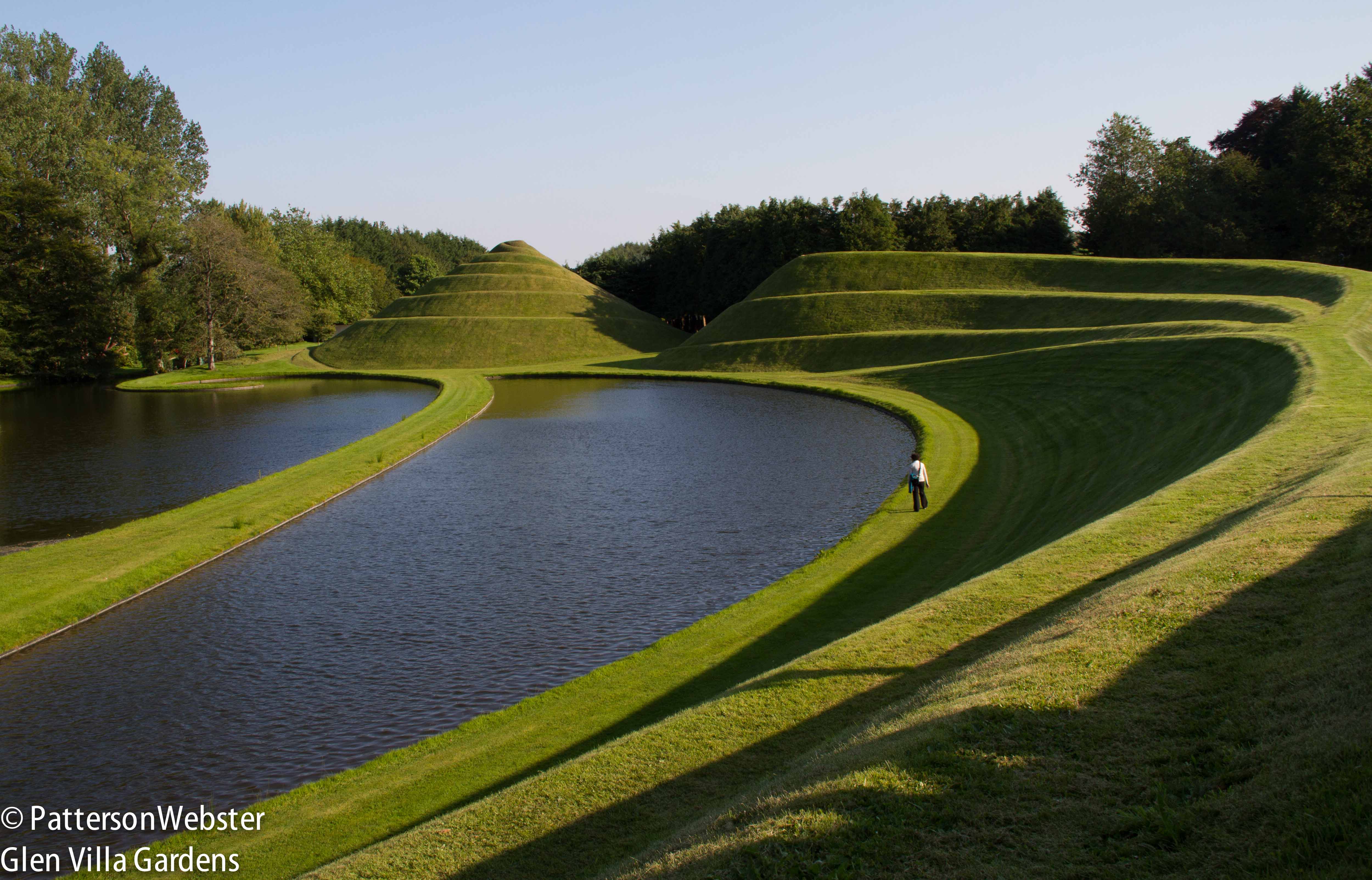
The Garden of Cosmic Speculation is open to a limited number of people on only one day a year. Julia arranged a private visit last year and our small group will be going again in September.
Most private gardens, though, don’t post rules. They don’t even mention them. So how do you behave when the do’s and don’t are stated? More than that, how do you get the most out of what may be a once-in-a-lifetime opportunity?
Over the years, Julia and I have developed some do’s and don’ts that we think are helpful.
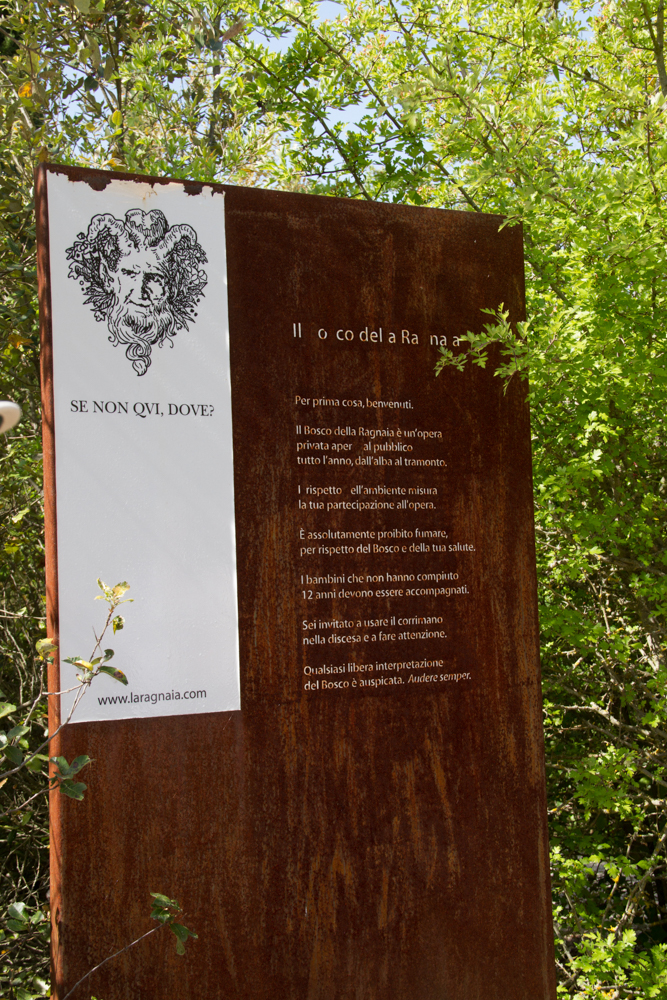
Bosco della Ragnaia is a private space that is open to visitors. Posted rules include a request not to smoke and for children under the age of 12 to be accompanied by an adult.
- Let the gardener do the talking. Before you jump in with questions or comments, before you wander off to explore, let her or him explain something about the garden, its history, how s/he wants it to function and to feel. If the gardener is also the creator or designer, what s/he has to say is doubly important. It provides the context for understanding what you will see.
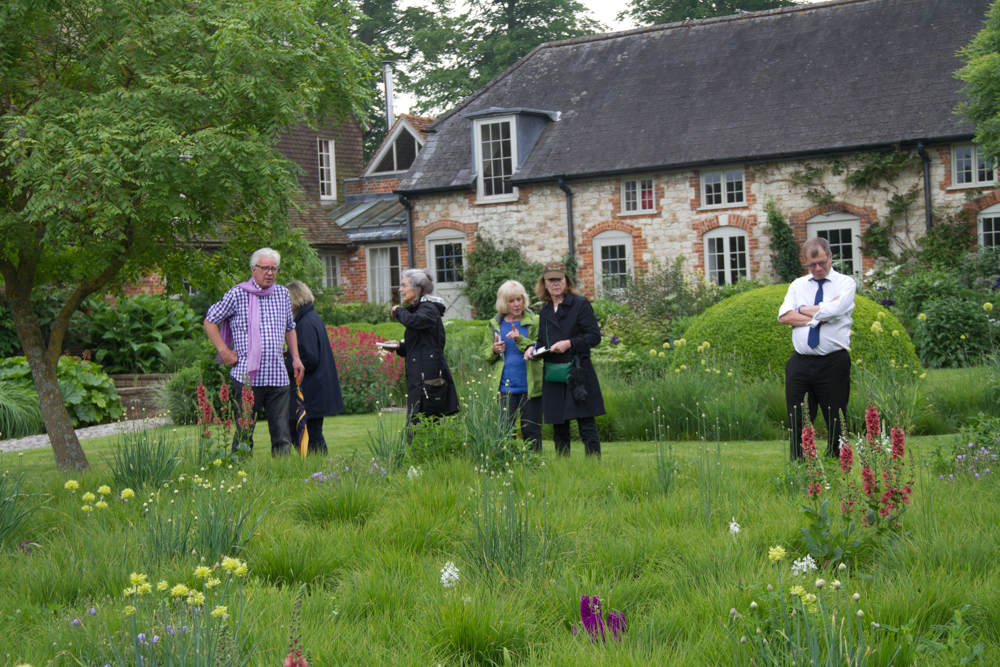
John Coke, owner of Bury Court in Hampshire, has a wealth of knowledge about plants which he freely shares.
- Pay attention to what the gardener says. Ask questions about the garden. Then listen to the answers. (It’s amazing how many people don’t.) If you want to say something about yourself or your own garden, make your comments relevant to what you are seeing. And don’t monopolize the host. Others have questions and may be more reticent about asking.
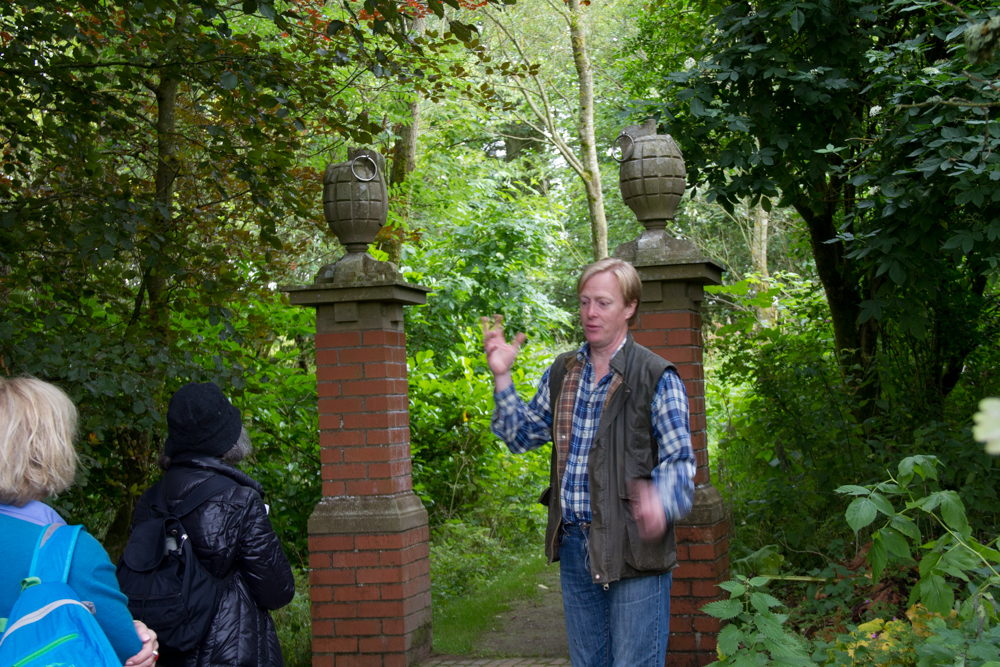
Our guide at Little Sparta in Scotland is explaining the grenades that sit atop the brick columns. This extraordinary garden alludes to classical mythology and the French Revolution, among many other things of interest to its creator, Ian Hamilton Finlay. It requires attention, and it rewards that attention abundantly.
- Pay attention to what the gardener doesn’t say. She won’t tell you not to pick flowers, not to litter, not to peep into the house, not to do those things that good manners prohibit. She shouldn’t need to. So don’t.

It would be easy to climb the steps and peer in the windows of Gresgarth Hall in Lancashire. But would you want someone peering through your windows? I know I wouldn’t!
- Look at the garden. Actually look at it, rather than simply walking through it. Ideally, go around the garden several times, first to get a general sense of the layout, then to observe the different elements more closely. Look in every direction, sideways, down and up, and not only straight ahead. Walk one way, then turn around and walk the other. When you retrace your steps, you’ll see things from a different angle. The difference can be informative, and can be helpful in planning your own garden.
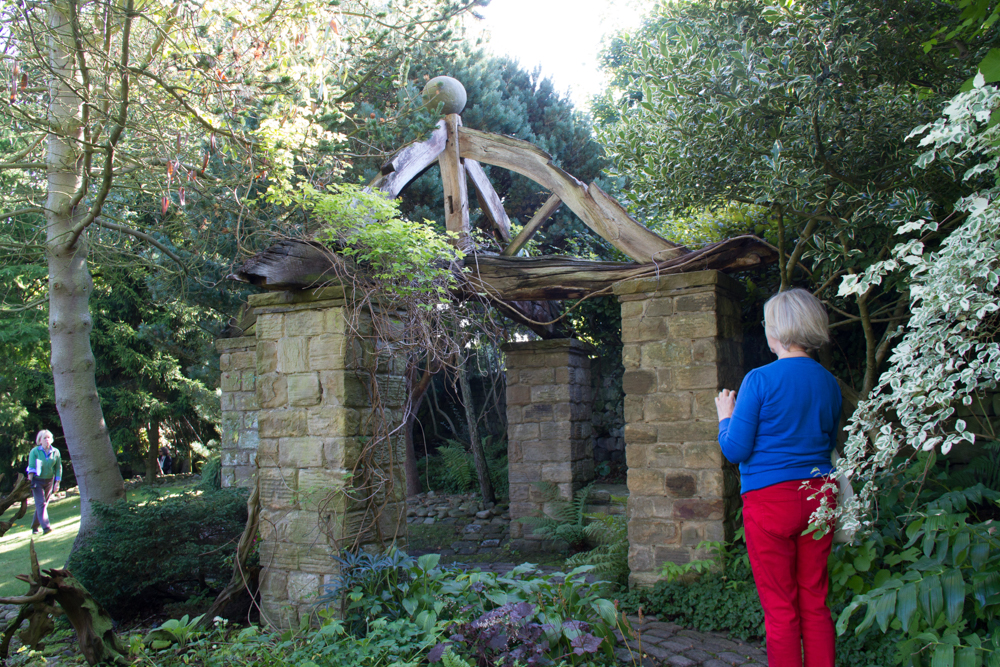
Two visitors to York Gate garden near Leeds, Yorkshire, examine both sides of a garden structure.
- Use all your senses, not only your eyes. Listen to the sounds the garden makes, the crunch of gravel underfoot, the trickle of water on rock, the songs of birds. Smell the wet earth, the lilac in bloom, the freshly cut grass. Touch fuzzy leaves gently, run your hands across a pebbly walk. Taste the air — or the snack the garden owner has prepared.
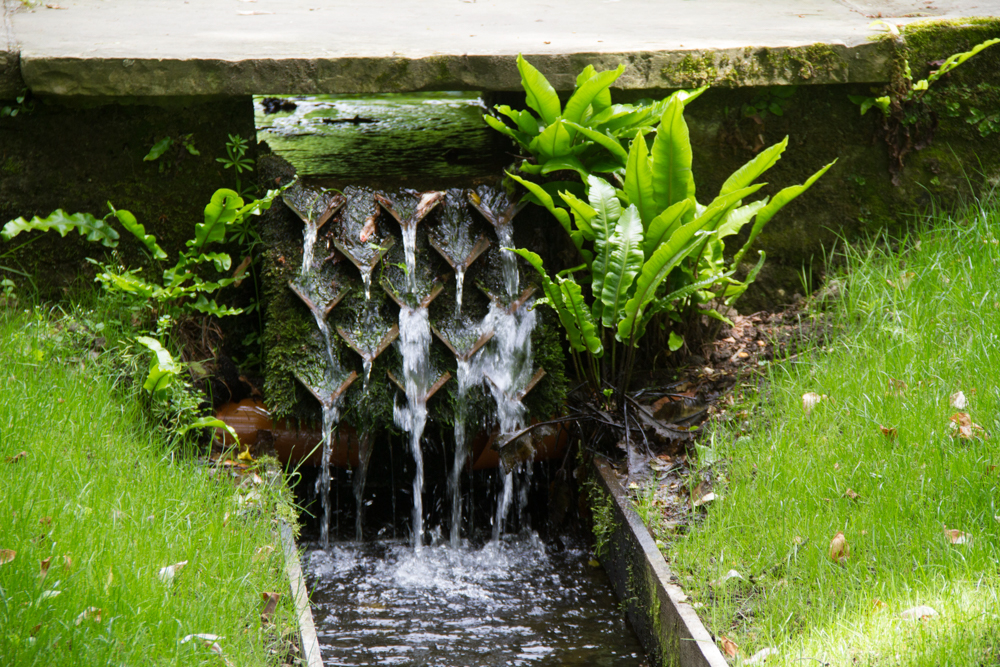
Water running down the rill at Shute House in Dorset sings a quiet song to those who listen.
- Use your eyes, your brain and your memory as well as your camera. Before you snap, think about what you are photographing and why. Take notes, mental or actual. Seeing a garden through the viewfinder of a camera limits your view. It can limit your memory too, so that the only things you remember are the things you photographed.
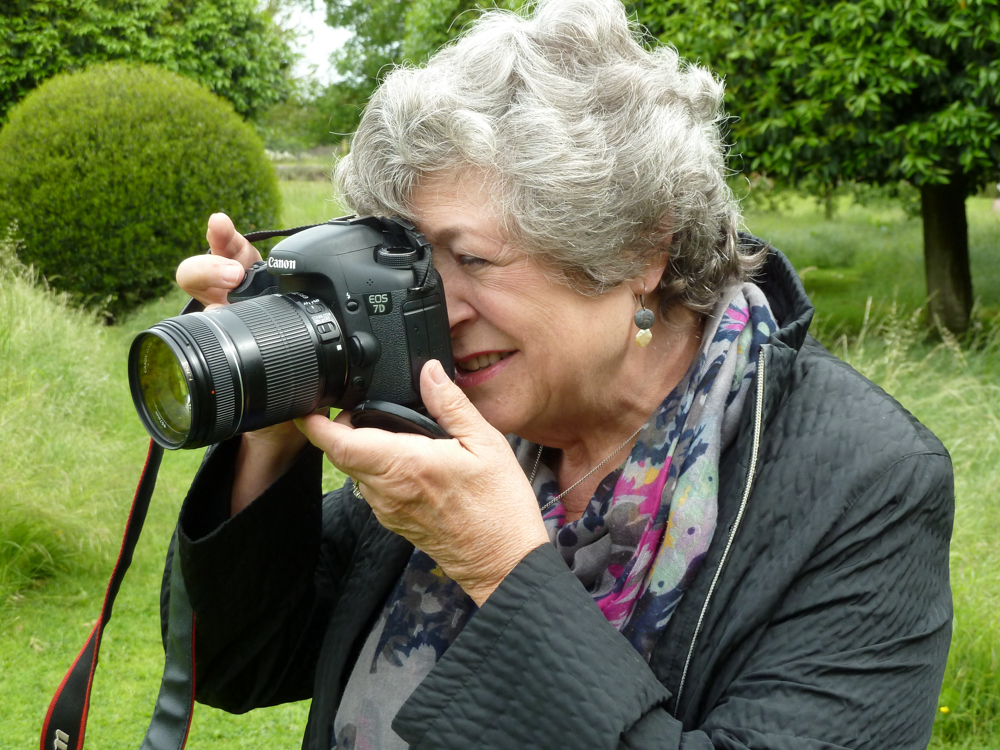
When it comes to taking garden photos, I am a big offender. Thanks to Judy O’Brien for this photo of me in a familiar pose, ignoring my own advice.
- Go beyond the familiar. There are fashions in garden design that change over time, and always there are differing opinions about what a garden should or shouldn’t look like. You may like or dislike what you see, but that doesn’t mean the garden is good or bad. So go beyond personal taste. Stretch your boundaries, stretch your mind.
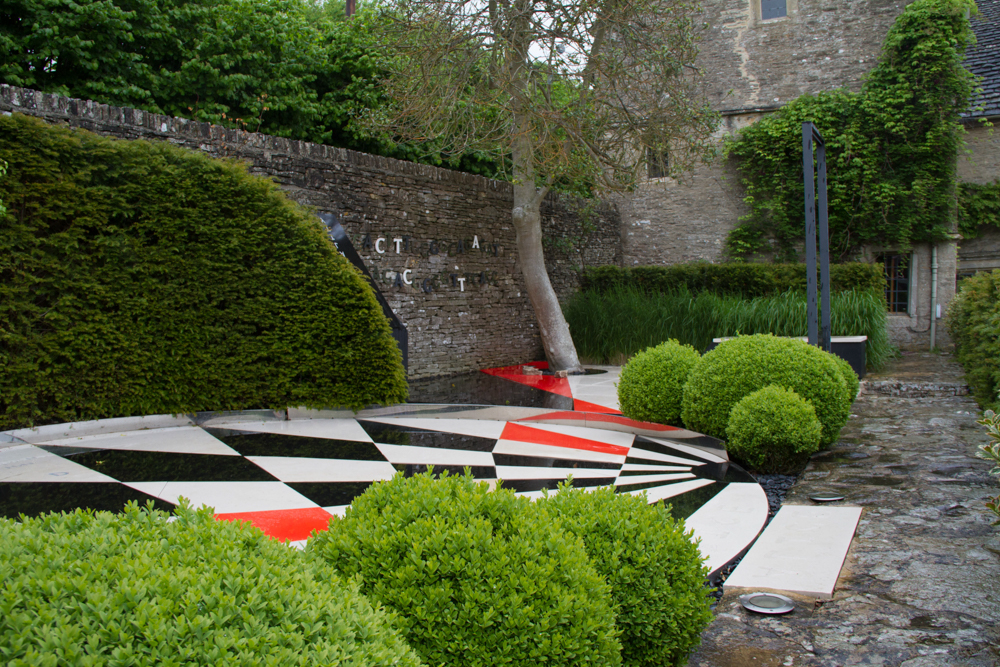
This terrace of black, white and red tiles at Througham Court in Gloucestershire sits uneasily beside an Arts and Crafts garden and a house built centuries ago. It provoked much discussion among the group that toured it. You can read my review of this garden at ThinkinGardens.com or at http://glenvillaartgarden.com/througham-court-a-garden-of-ideas/
- Pay attention. Be present and fully engaged. By all means, discuss what you see with a companion. Discuss the layout, the choices that have been made. But don’t simply chat. If you do, you aren’t really there. This is so obvious that it shouldn’t need stating. Yet it does.
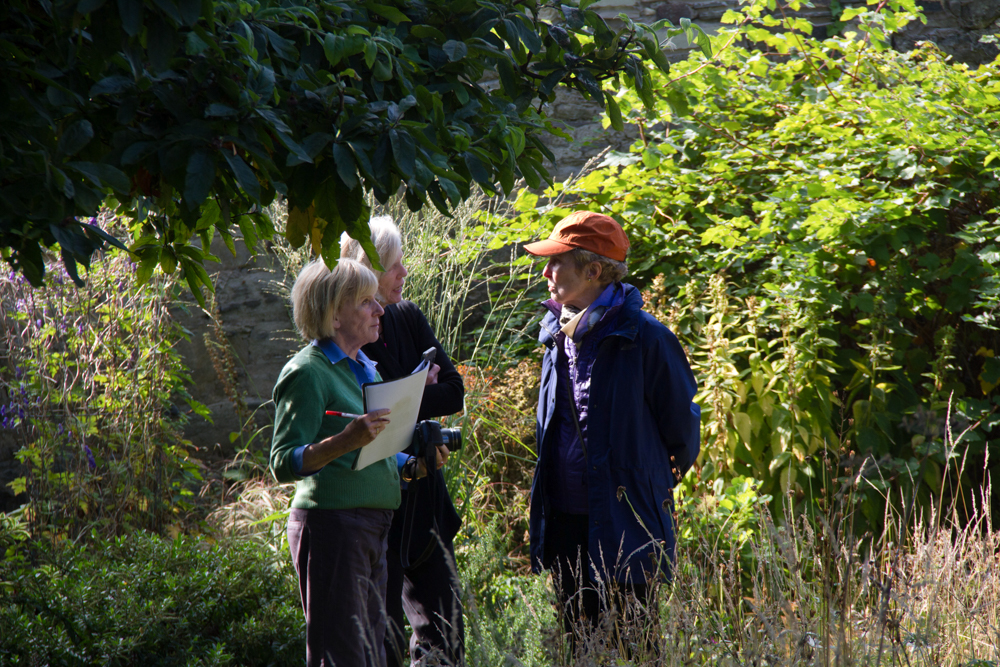
Knowing the three people pictured, I am sure they were discussing something important about the garden. Taking notes, as well, I see!
- Be quiet enough to let the garden speak. Take time to sit, to feel the atmosphere, to enjoy the scents. Open yourself up to the full experience of being there.
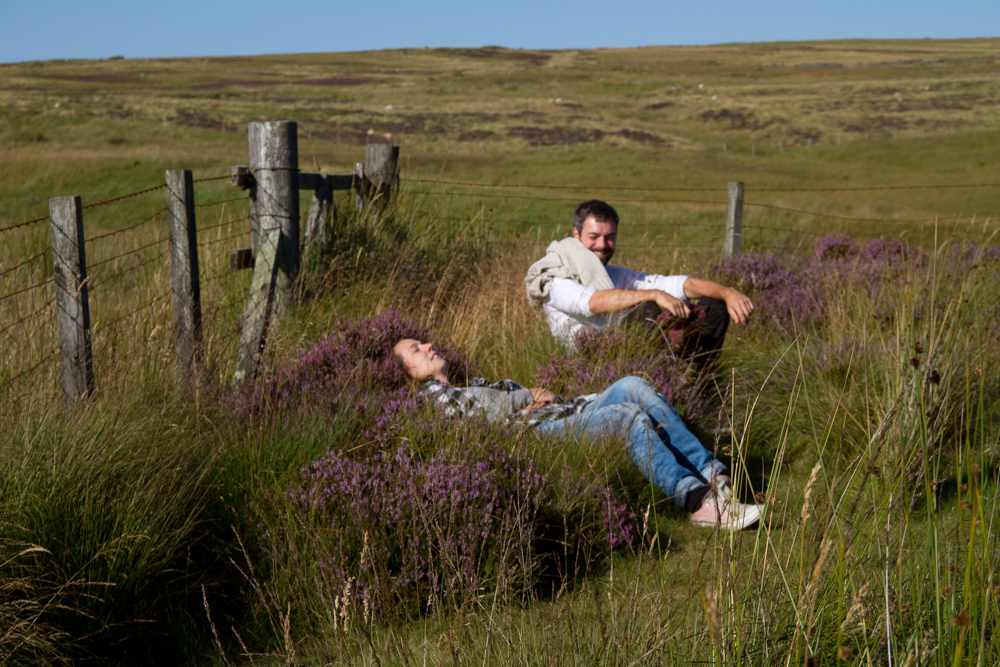
Who wouldn’t want to relax in the sunshine at Little Sparta on a beautiful warm day?
Finally, a don’t:
- Don’t get in the way. Beautiful gardens don’t happen by magic. Borders need weeding, hedges need trimming and people doing the work need to be respected. Getting in the way can be dangerous, too, so take care.
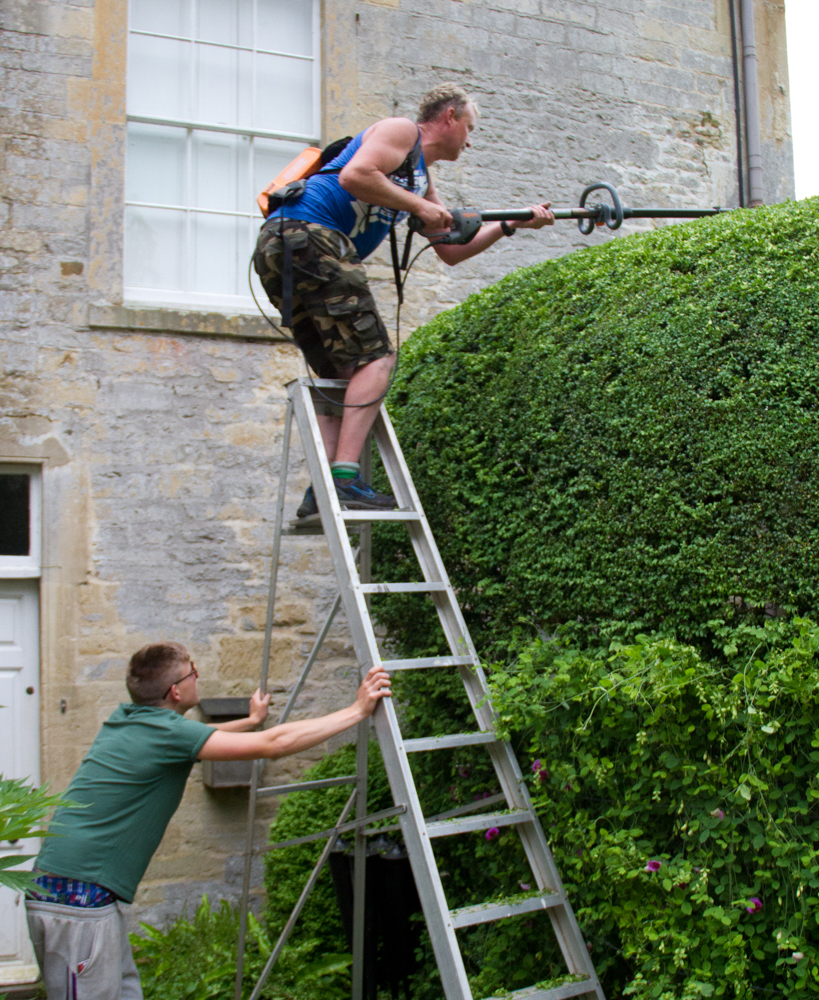
The hedges at Iford Manor were being trimmed the last time I visited. I was happy to see that the ladder was supported even if the man with the hedge trimmer was balanced rather precariously.
A final note: I started hosting garden tours as a way to travel with friends. Julia and I collaborated on an itinerary and I invited a few people I thought would enjoy the experience to travel along with us. The response was fantastic and the tour filled quickly. One friend led to another, and to another, and the invitation list grew.
Some of the gardens pictured above are included on tours that Julia and I are offering this year. I don’t advertise these tours and don’t intend to, but if you are interested in information about them, do get in touch, either by commenting below or by using the contact page on my website.
Do you have other suggestions about how to get the most out of a garden visit? I hope you’ll share them if you do.




